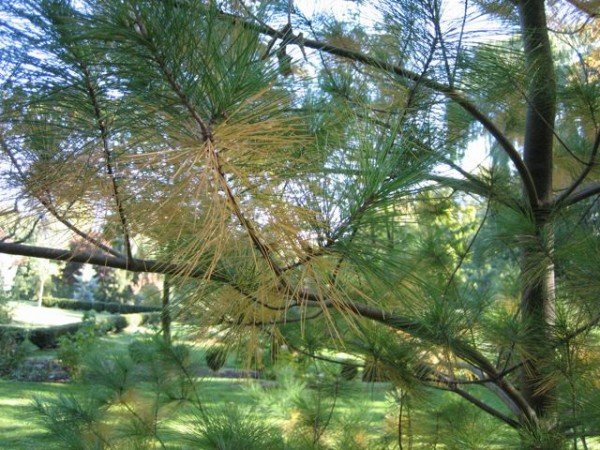
Lots of plants are falling down in the garden, or at least are on a deep slant (grasses, phlox, asters), so I’ve been cruising around, cutting back where possible and propping up where necessary. Getting out “into the bush” this way presents a picture of the season moving on quite quickly. I was surprised, in the last week of September, to see clear signs of needle cast on the conifers, at least two weeks earlier than expected. They’re getting ready to drop needles, as the process of renewal begins.
Conifers lose a third of their foliage each autumn in preparation for new spring growth next spring. If you look at the interior of loosely structured evergreens like false cypress or Austrian pine, or examine the deeper and older branches on cedar and juniper, you’ll see fading foliage getting ready to crisp up and drop off. Sometimes this fading foliage is quite prominent and could be mistaken for disease. But the natural process is for older interior needles to fade in October and fall as the brisk winds of November comb through the branches. The result is a gorgeous layer of mulch around the plants, which should be retained. Don’t sweep it up in a fit of housekeeping!
However, I think this is happening earlier than ever before in my Zone 6 garden. Perhaps it’s result of the heat stress this past summer. I did try to water more, but must admit that I didn’t think of the conifers as often as I should have. Now I see the results. Well, there’s been good rain the past several days, and I hope that will encourage roots to repair. It seems no matter how long I’m at this gardening job, I still forget to water the plants adequately.
Other posts by Judith this week:

Needlecast is generally understood to mean diseases causing foliar drop as opposed to the normal cycling of needles on conifers. Please see http://www.omafra.gov.on.ca/english/crops/facts/Needlecast.htm.